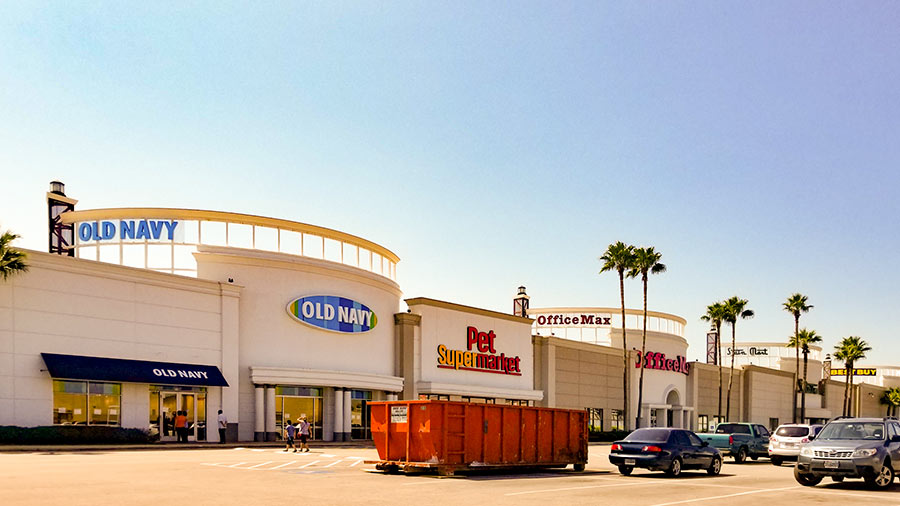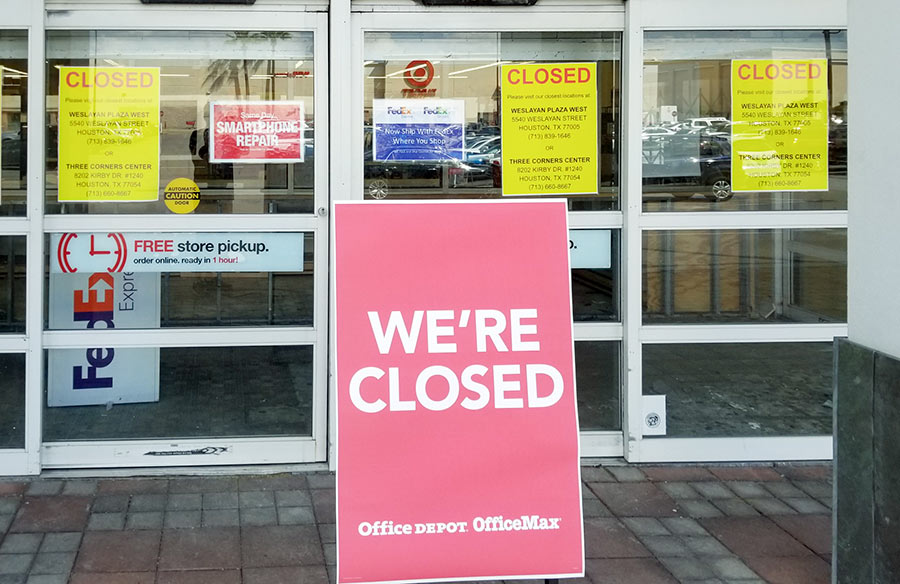Here’s a commandeerable after-and-before flooding shot, taken from a drone hovering 300 ft. above Hwy. 6 just north of the Barker Reservoir spillway. Move the slider at the bottom of the image to toggle slowly between the 2 views, taken Thursday, August 24th (on the right, not long before the arrival of Hurricane Harvey) and Tuesday, August 29th (on the left, after stormwater filled the reservoir and the flooded the area). You can also rotate and zoom the image with your pointing device or finger.
In the initial view, the camera is facing straight down Addicks-Howell Rd.; the wider Hwy. 6 appears to veer off to the left. Addicks-Howell marks the entrance to Fleetwood, the adjacent neighborhood. Rotate the view 180 degrees to see the spillway.
Houston visualization firm Reality Imaging & Mapping Technologies took the panoramic images and stitched them together to create the immersive and zoomable view, which can also be experienced as a VR image. Click here to view the image in its own browser window.
Image: Reality Imaging & Mapping Technologies
Harvey Media
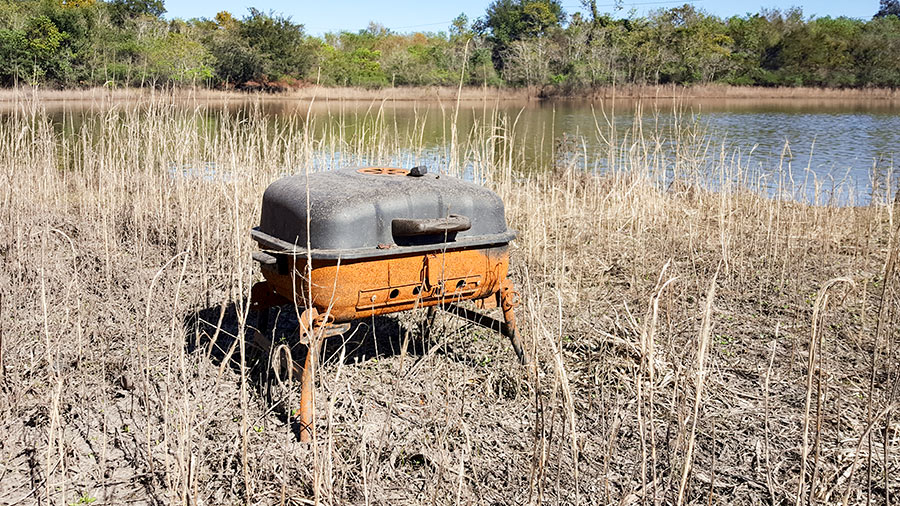
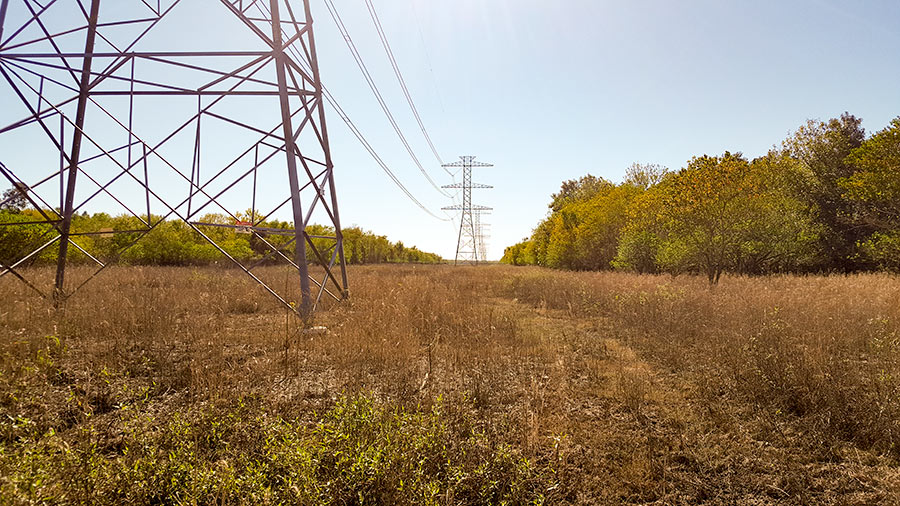


 “. . . I think that if we are going to be realistic about the way that we finance flood control, that the core of such a plan needs to take a page from how flood insurance gets underwritten. Everybody pays a property tax to a watershed-specific flood control entity, but that tax is adjusted based on the elevation of their first-floor living area relative to the Base Flood Elevation. If you’re more than a few feet above it, your tax is very low. If you live more than a few feet below it . . . you’re probably going to pay so much in taxes that it’ll become immediately economic to raise your structure or demolish it. Right away, the inventory and value of property subject to flood risk is reduced; and what’s left that is tolerably at-risk pays for its own reduced need for risk mitigation. And . . . if we’re too gun shy to pull the trigger on a plan like this, which would totally wipe out a lot of people’s equity in vast swaths of real estate, okay well that’s where people not at very much risk should be expected to pay more taxes even without receiving very much in the way of benefits. Yeah, I’m basically proposing Obamacare for flood control in Houston, but only as a humane alternative which reveals a startling truth: that the big money for this sort of thing is unlikely to come from up on high, from the feds or the state government (and it shouldn’t IMO). Financing this stuff locally is going to hurt. One thing is very very clear: whatever kinds of administrative bodies are created or re-jiggered to deal with this issue have got to address legacy development first and foremost. We need a plan to cope with what is already on the ground. This is not something that we can just build ourselves out of, going forward, with stricter rules for new development, feel the catharsis, hold hands and sing Kumbaya, and call it a day.” [
“. . . I think that if we are going to be realistic about the way that we finance flood control, that the core of such a plan needs to take a page from how flood insurance gets underwritten. Everybody pays a property tax to a watershed-specific flood control entity, but that tax is adjusted based on the elevation of their first-floor living area relative to the Base Flood Elevation. If you’re more than a few feet above it, your tax is very low. If you live more than a few feet below it . . . you’re probably going to pay so much in taxes that it’ll become immediately economic to raise your structure or demolish it. Right away, the inventory and value of property subject to flood risk is reduced; and what’s left that is tolerably at-risk pays for its own reduced need for risk mitigation. And . . . if we’re too gun shy to pull the trigger on a plan like this, which would totally wipe out a lot of people’s equity in vast swaths of real estate, okay well that’s where people not at very much risk should be expected to pay more taxes even without receiving very much in the way of benefits. Yeah, I’m basically proposing Obamacare for flood control in Houston, but only as a humane alternative which reveals a startling truth: that the big money for this sort of thing is unlikely to come from up on high, from the feds or the state government (and it shouldn’t IMO). Financing this stuff locally is going to hurt. One thing is very very clear: whatever kinds of administrative bodies are created or re-jiggered to deal with this issue have got to address legacy development first and foremost. We need a plan to cope with what is already on the ground. This is not something that we can just build ourselves out of, going forward, with stricter rules for new development, feel the catharsis, hold hands and sing Kumbaya, and call it a day.” [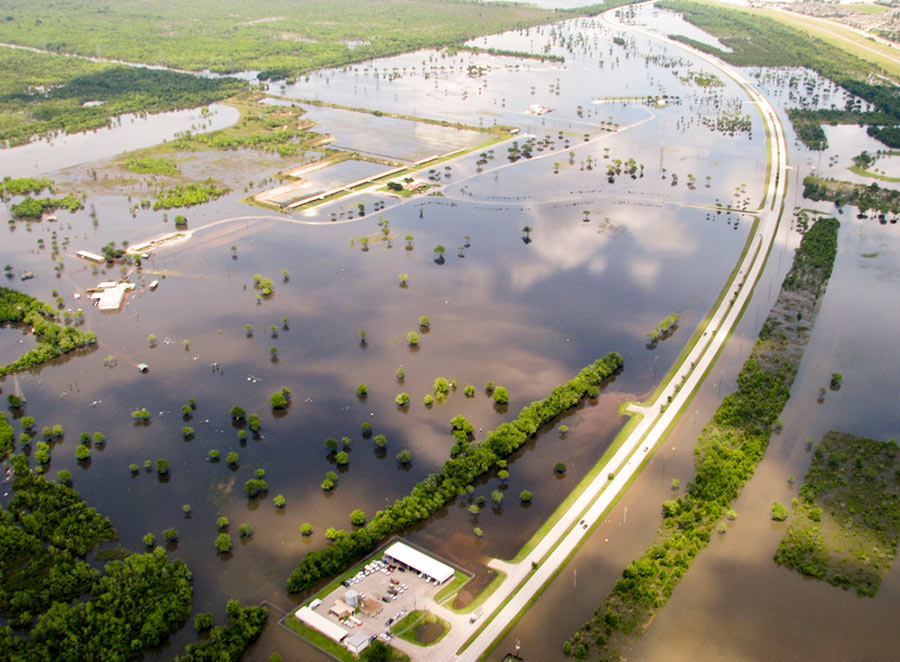 All water stuck behind the Addicks and Barker dams has now been released, the Army Corps of Engineers announced late yesterday.
All water stuck behind the Addicks and Barker dams has now been released, the Army Corps of Engineers announced late yesterday.  “I have a question regarding the apartments in Kingwood. There is a statement in the letter from the apartments indicating that there is a clear difference between mold and mildew. I understand it as they are both one and the same when it comes to interior livable spaces. If it smells and-or is visible you have a problem irregardless of the classification of mold or mildew.
Is this not correct? Is there a legal distinction per Texas Law? Can someone please chime in? Thanks.” [
“I have a question regarding the apartments in Kingwood. There is a statement in the letter from the apartments indicating that there is a clear difference between mold and mildew. I understand it as they are both one and the same when it comes to interior livable spaces. If it smells and-or is visible you have a problem irregardless of the classification of mold or mildew.
Is this not correct? Is there a legal distinction per Texas Law? Can someone please chime in? Thanks.” [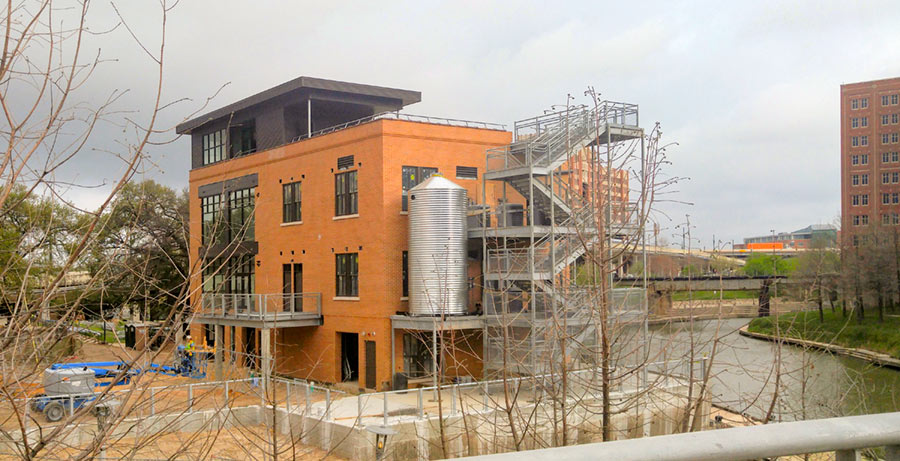 Talk about timing: The Rice Design Alliance’s annual home tour
Talk about timing: The Rice Design Alliance’s annual home tour  “I’m in the market for a new place. Where can I find if the house was flooded or is otherwise in a compromised zone? It appears in Harris County such information wasn’t recorded or readily available. Thanks.” [
“I’m in the market for a new place. Where can I find if the house was flooded or is otherwise in a compromised zone? It appears in Harris County such information wasn’t recorded or readily available. Thanks.” [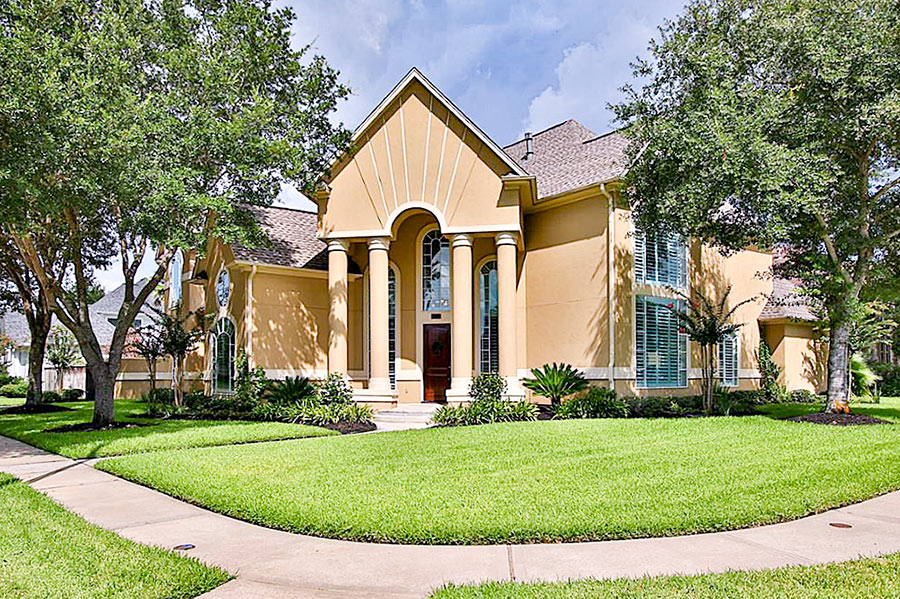 “None of the more than half a dozen residents interviewed by The Texas Tribune and ProPublica after the floods said they knew they were living inside Addicks or Barker — many of their neighborhoods are several miles away from the dams. Several local officials — including Houston’s ‘flood czar’ and a neighboring county executive — said they had no idea the neighborhoods had been built inside the flood pools. Several real estate agents said they didn’t realize they were selling homes inside the pools.” This from the latest exposé on
“None of the more than half a dozen residents interviewed by The Texas Tribune and ProPublica after the floods said they knew they were living inside Addicks or Barker — many of their neighborhoods are several miles away from the dams. Several local officials — including Houston’s ‘flood czar’ and a neighboring county executive — said they had no idea the neighborhoods had been built inside the flood pools. Several real estate agents said they didn’t realize they were selling homes inside the pools.” This from the latest exposé on 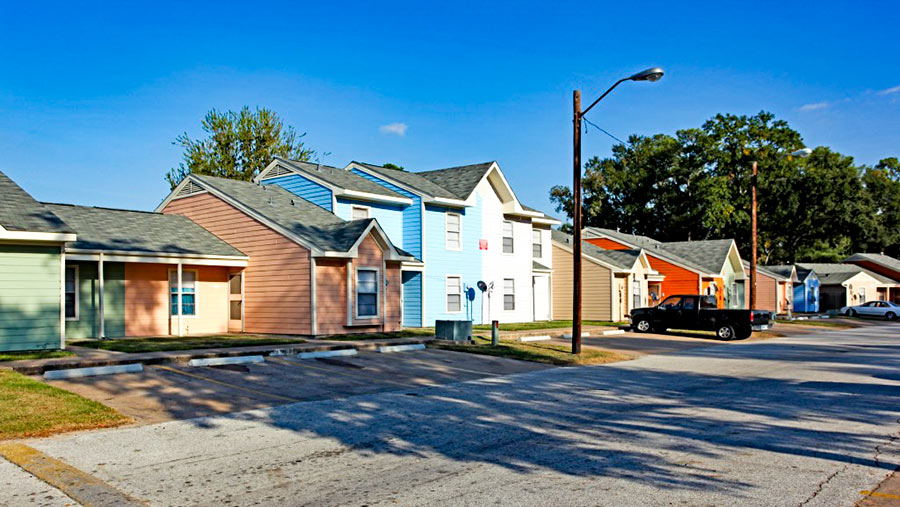 A new statement from the Houston Housing Authority provides a little more background on its decision to
A new statement from the Houston Housing Authority provides a little more background on its decision to 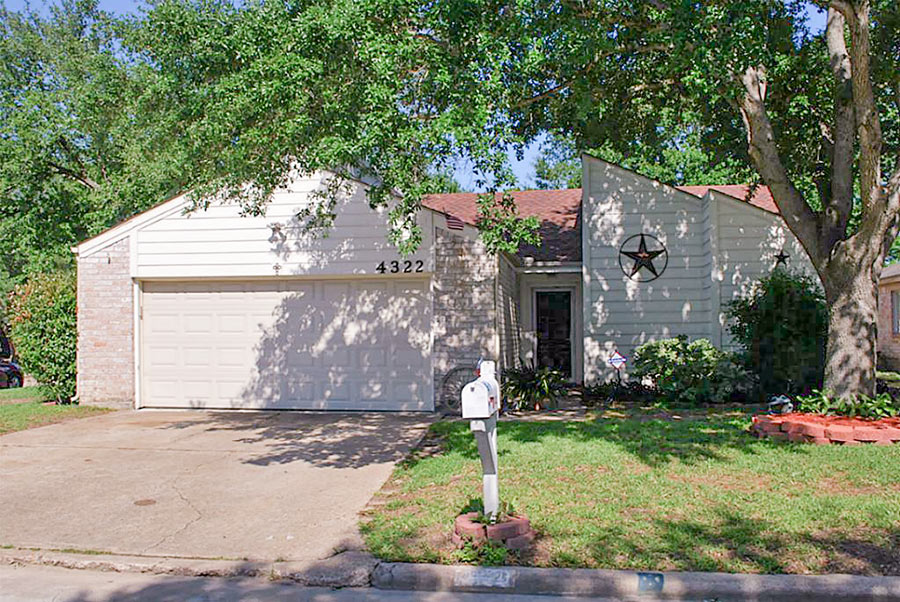 Outsiders moving into town to buy up homes from distressed owners for pennies on the dollar in the wake of local catastrophe is a proud and longstanding Houston tradition: It keeps the city’s reputation for real-estate shenanigans intact, even as oldtimers mellow. It’s how Sir Allen Stanford got his
Outsiders moving into town to buy up homes from distressed owners for pennies on the dollar in the wake of local catastrophe is a proud and longstanding Houston tradition: It keeps the city’s reputation for real-estate shenanigans intact, even as oldtimers mellow. It’s how Sir Allen Stanford got his 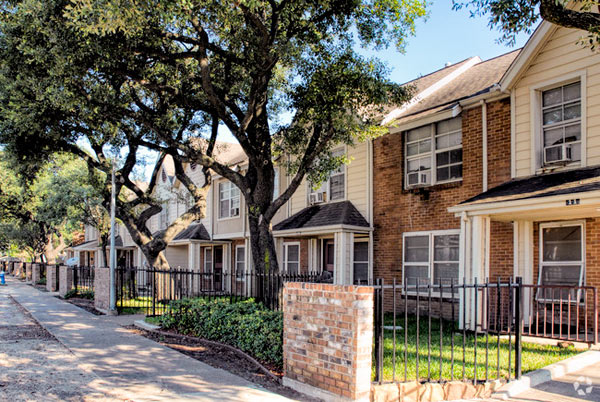 112 of the 296 apartments at Clayton Homes have been deemed “uninhabitable” by its owner, the Houston Housing Authority, which is now seeking to demolish them. The affordable-housing complex tucked between Hwy. 59 and Buffalo Bayou north of Runnels St. in the northwest corner of the East End was flooded after Hurricane Harvey; subsequent investigations conducted by local researchers
112 of the 296 apartments at Clayton Homes have been deemed “uninhabitable” by its owner, the Houston Housing Authority, which is now seeking to demolish them. The affordable-housing complex tucked between Hwy. 59 and Buffalo Bayou north of Runnels St. in the northwest corner of the East End was flooded after Hurricane Harvey; subsequent investigations conducted by local researchers 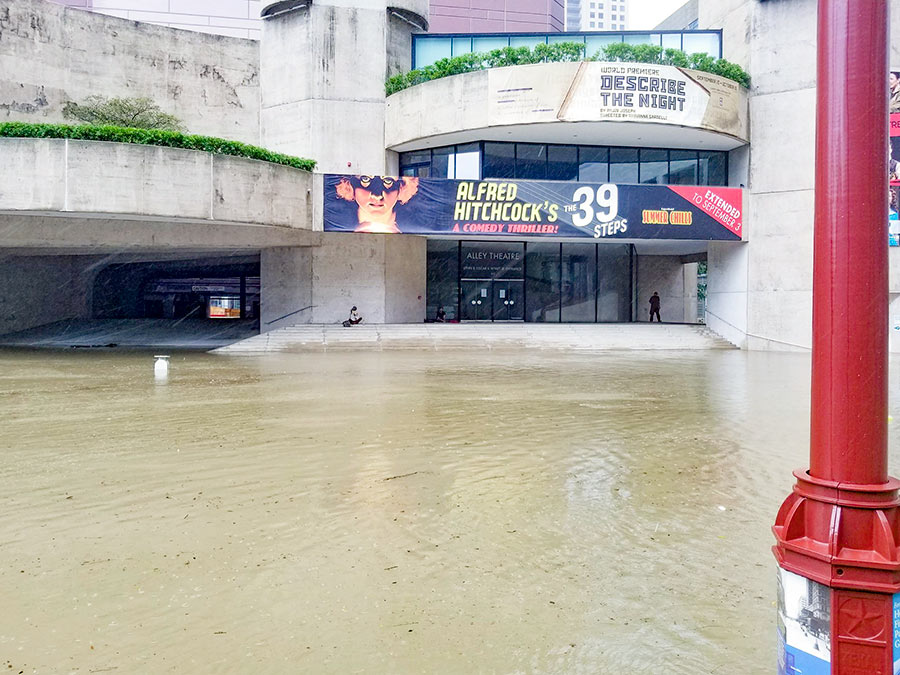 Harvey flooding caused an estimated $15 million of damage to the Alley Theatre’s basement-level stage, lobby, and dressing rooms, but for the most part spared its
Harvey flooding caused an estimated $15 million of damage to the Alley Theatre’s basement-level stage, lobby, and dressing rooms, but for the most part spared its 